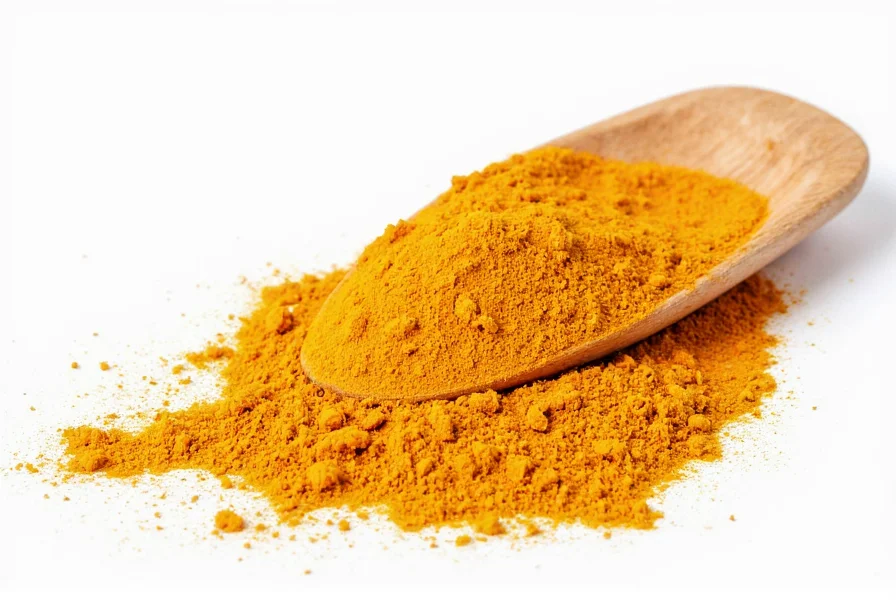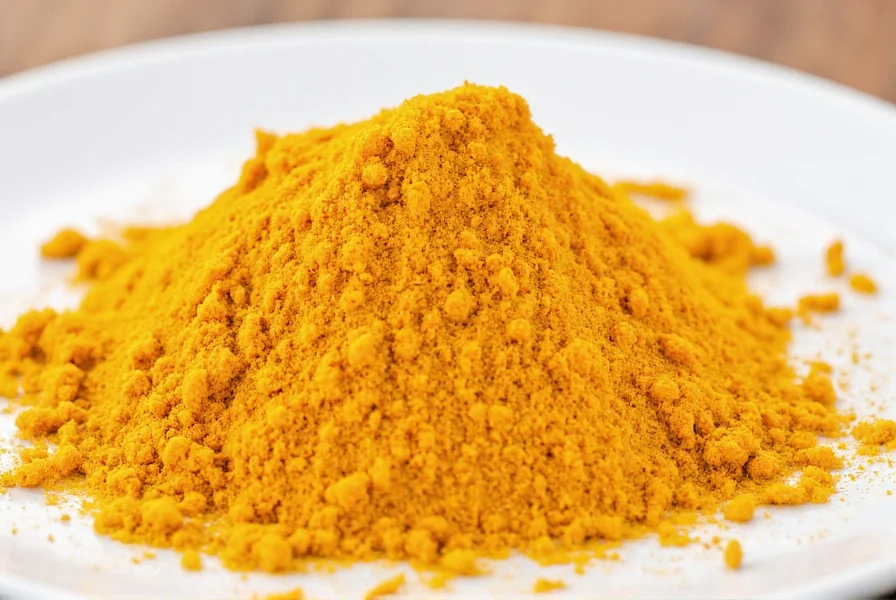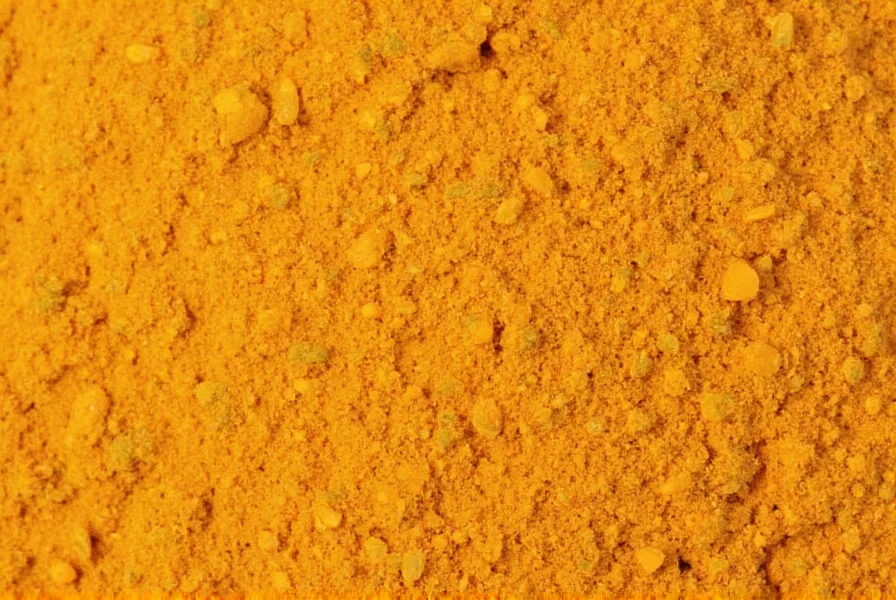Understanding turmeric flavor is essential for home cooks and professional chefs alike. This golden spice, scientifically known as Curcuma longa, delivers a unique sensory experience that goes beyond its vibrant color. While many associate turmeric primarily with curry blends, its flavor profile stands distinctly on its own.
The Complete Flavor Profile of Turmeric
When evaluating turmeric flavor characteristics, several key elements emerge. The primary taste sensation is earthy with a moderate bitterness that's more pronounced in higher concentrations. This bitterness isn't harsh but rather pleasant when balanced properly in recipes. Secondary notes include:
- Subtle citrus undertones (particularly orange)
- Mild peppery warmth (not actual heat)
- Woody, resinous background notes
- Faint floral hints in high-quality varieties
- A ginger-like pungency, especially in fresh turmeric
The intensity of turmeric flavor depends significantly on whether you're using fresh root or dried powder. Fresh turmeric delivers a brighter, more pronounced ginger-like quality with juicier citrus notes, while dried turmeric powder offers a more concentrated earthiness with deeper woody characteristics.
| Form | Flavor Intensity | Primary Notes | Best Culinary Uses |
|---|---|---|---|
| Fresh turmeric root | Moderate | Ginger-like, citrusy, bright | Smoothies, fresh juices, salad dressings |
| Dried turmeric powder | Strong | Earthy, woody, warm | Curries, rice dishes, baked goods |
| Turmeric extract | Very strong | Concentrated earthiness | Supplements, medicinal preparations |
How Turmeric Flavor Compares to Similar Spices
Many people confuse turmeric flavor with curry powder, but they're distinctly different. Curry powder is a blend that typically includes turmeric along with other spices like cumin, coriander, and chili. Turmeric itself has a more singular, focused flavor profile.
When comparing turmeric to ginger (a common point of reference), turmeric offers earthier notes with less sharp heat. While ginger delivers immediate zing, turmeric provides a more subtle warmth that builds gradually. Compared to saffron (another golden spice), turmeric has a more pronounced bitterness and lacks saffron's distinctive floral, honey-like notes.
Factors That Influence Turmeric Flavor Experience
Several elements affect how turmeric flavor manifests in your cooking:
Quality and Freshness
Freshness dramatically impacts turmeric flavor. Ground turmeric loses potency within 6-12 months, becoming more bitter and less complex. High-quality turmeric should have a vibrant aroma when opened, while stale turmeric smells dusty and one-dimensional.
Culinary Technique
Turmeric flavor develops differently depending on cooking method:
- Dry-toasting: Enhances earthy notes but can increase bitterness if overdone
- Frying in oil: Mellow the bitterness and release more complex flavor compounds
- Raw applications: Preserves brighter citrus notes but may taste more pungent
Food Pairings That Balance Turmeric Flavor
Certain ingredients naturally complement and balance turmeric's distinctive taste:
- Fat (coconut milk, ghee, olive oil) - coats the palate and reduces perceived bitterness
- Acidity (lemon juice, vinegar) - brightens earthy notes and cuts through heaviness
- Sweetness (honey, coconut, fruits) - counteracts bitterness effectively
- Other warm spices (cinnamon, cardamom) - create layered flavor experiences

Common Misconceptions About Turmeric Flavor
Several myths persist about turmeric's taste characteristics. First, turmeric is not inherently spicy hot like chili peppers - it provides warmth without significant capsaicin heat. Second, the bright yellow color doesn't translate to an overpowering flavor; turmeric actually has a relatively subtle presence compared to its visual impact.
Another misconception is that all turmeric tastes the same. In reality, turmeric flavor varies by region and growing conditions. Indian varieties tend to be more pungent and earthy, while Southeast Asian turmeric often has brighter citrus notes. The specific cultivar also affects flavor intensity and nuance.
Practical Applications for Cooking with Turmeric Flavor
Understanding turmeric flavor helps you use it more effectively in various culinary contexts:
Savory Dishes
For curries and stews, bloom turmeric in hot oil with other spices to mellow its bitterness. The classic Indian technique of tadka (tempering spices in oil) transforms turmeric's flavor from sharp to rounded and complex. In rice dishes, adding turmeric early in the cooking process allows its flavor to distribute evenly without becoming dominant.
Sweet Applications
Surprisingly, turmeric flavor works beautifully in sweet preparations. Its earthiness complements warm spices in baked goods, while its subtle bitterness balances sweetness in desserts. Golden milk lattes showcase turmeric flavor enhanced by black pepper (which increases curcumin absorption) and sweetened with honey or maple syrup.

Beverages
Fresh turmeric adds vibrant flavor to juices and smoothies. When using fresh turmeric in beverages, pair it with strong flavors like pineapple, orange, or ginger to balance its earthiness. For tea, simmer fresh turmeric slices with lemon and honey for a soothing, flavorful drink that highlights turmeric's natural citrus notes.
Maximizing Turmeric Flavor in Your Kitchen
To get the most from turmeric flavor while minimizing potential bitterness:
- Store turmeric powder in an airtight container away from light and heat
- Buy whole turmeric root when possible and grind it yourself for maximum freshness
- Always combine with a pinch of black pepper to enhance both flavor and bioavailability
- Start with small amounts (1/4 to 1/2 teaspoon per serving) and adjust to taste
- Pair with complementary flavors like coconut, citrus, and warm spices
Understanding the nuances of turmeric flavor profile transforms how you incorporate this ancient spice into modern cooking. Whether you're creating traditional curry blends or experimenting with contemporary fusion dishes, recognizing turmeric's earthy bitterness, warm citrus notes, and subtle pungency helps you use it more intentionally and effectively.
Frequently Asked Questions About Turmeric Flavor
Does turmeric taste bitter?
Yes, turmeric has a naturally earthy bitterness, particularly when used in larger quantities. This bitterness is more pronounced in dried turmeric powder than in fresh root. The bitterness can be balanced by cooking turmeric in fat (like coconut milk or oil), adding acidity (lemon juice or vinegar), or pairing with sweet ingredients. When used in appropriate amounts, the bitterness becomes a pleasant background note rather than overwhelming the dish.
Is turmeric spicy like chili peppers?
No, turmeric is not spicy in the sense of producing heat like chili peppers. It offers a mild warmth and subtle pungency similar to ginger, but without the burning sensation associated with capsaicin. The warmth from turmeric builds gradually and is more aromatic than physically hot. This makes turmeric accessible to people who cannot tolerate spicy foods while still providing complex flavor depth.
How would you describe turmeric flavor to someone who's never tasted it?
Turmeric flavor combines earthy notes similar to ginger with subtle citrus undertones (particularly orange), a mild peppery warmth, and a hint of woodiness. Imagine the earthiness of ginger combined with the brightness of orange zest and a whisper of black pepper's warmth, all without the sharp heat. High-quality turmeric has a complex profile where no single note dominates, creating a balanced foundation that enhances other ingredients rather than overpowering them.
Why does turmeric sometimes taste unpleasantly bitter?
Turmeric can taste unpleasantly bitter when used in excessive amounts, when it's stale or low quality, or when not properly prepared. Fresh turmeric generally has less bitterness than older powder. Cooking turmeric in fat (like oil or coconut milk) before adding other ingredients helps mellow the bitterness. Adding a small amount of acid (lemon juice or vinegar) or sweetness (honey or coconut) also balances turmeric's natural bitterness. Using turmeric beyond its shelf life (typically 6-12 months for powder) results in more pronounced, less complex bitterness.
Does fresh turmeric taste different from powdered turmeric?
Yes, fresh turmeric and powdered turmeric have noticeably different flavor profiles. Fresh turmeric root has a brighter, more pronounced ginger-like quality with juicier citrus notes and less intense earthiness. It's more aromatic and slightly less bitter than the dried powder. Powdered turmeric offers a more concentrated earthiness with deeper woody characteristics and can be more bitter if stale. Fresh turmeric works better in raw applications like juices and dressings, while powdered turmeric is preferred for cooked dishes where its flavor can mellow and integrate with other ingredients.











 浙公网安备
33010002000092号
浙公网安备
33010002000092号 浙B2-20120091-4
浙B2-20120091-4